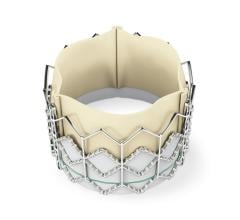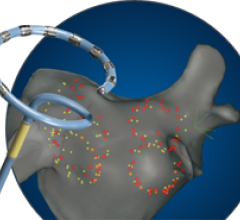Wearable cardioverter defibrillators (WCD) can be an effective therapy option for patients with a transient or undefined arrhythmic risk, according to the WEARIT-II Registry, the largest prospective study to track patients with the device in a real-world setting. The new findings show that WCDs can serve as a bridging therapy and help avoid unnecessary permanent implantation of defibrillators in patients who ultimately may not need them.
Biotronik announced the U.S. Food and Drug Administration (FDA) granted approval for its Ilesto 7 implantable cardioverter-defibrillator/cardiac resynchronization therapy defibrillator (ICD/CRT-D) series. The devices are smaller, thinner and lighter than previous systems.
The American Society of Nuclear Cardiology (ASNC) testified at a U.S. House Ways and Means Health Subcommittee hearing that examined options for repealing the sustainable growth rate (SGR) formula and reforming the Medicare physician payment system to reward quality and value in patient care. Kim Allan Williams, M.D., ASNC past-president and a current member of the society’s health policy steering committee, testified as a witness in the hearing on May 7, 2013. Williams currently serves as the Dorothy Susan Timmis endowed professor and chairman of the division of cardiology at Wayne State University School of Medicine.
Providing exceptional cardiovascular care for patients to achieve the best possible outcomes is the number one goal for ...

During the American College of Cardiology 2013 (ACC.13) annual meeting in March, vendors discussed several trends they are observing in the cardiac ultrasound market and displayed the latest echo advances.

The development of 3-D transesophageal echo (TEE) just a few years ago has enabled a new generation of interventional procedures to be performed, which otherwise would have been extremely difficult or impossible. With live 3-D TEE, physicians can see cardiac structures and function, as well as real-time displays of the beating heart, from new perspectives.

The Aspirus Heart & Vascular Institute (AH&VI) services 14 counties in north central Wisconsin and an additional seven counties in the Upper Peninsula of Michigan. The institute receives patients from five hospitals within its system and approximately 10 other hospitals from within this service area. With such a large, mostly rural population — patients come from as far away as 80 miles or more — the organization needed to find a way to more efficiently serve its ST-elevation myocardial infarction (STEMI) and heart valve repair patients.
Cardiac positron emission tomography (PET) is growing in popularity among cardiologists because it provides the ability ...

When cath labs begin performing radial access procedures, both the staff and the operators need to keep an open mind and recognize that it takes time for everyone in the lab to become proficient in doing things in a different way. Learning a new skill can take time and dedicated effort, and as long as one recognizes that, a fledgling transradial program can flourish rather than be abandoned. We offer the following tips for consideration based on our own experience.

There is a growing trend in the use of small, portable extracorporeal membrane oxygenation (ECMO) systems for hemodynamic support. In years past, ECMO systems were a tool of the operating room, primarily for bypass surgery. Older systems required a perfusionist to watch the machine 24 hours a day while it was in operation. Today’s ECMOs use consoles that are much easier to use and do not require a full-time person to monitor. Also, as the technology has been miniaturized, simplified and now uses a percutaneous access system, ECMOs are being used outside the OR, including the cath lab, when a large amount of support is needed that cannot be provided by IABPs or pVADs.

Since the 1970s, intra-aortic balloon pumps (IABPs) have been the gold standard of minimally invasive hemodynamic support, but more recently developed percutaneous ventricular assist devices (pVAD) are offering an alternative. Clinical data shows pVADs offer more support than IABPs, but their much higher price tag currently restricts their use to niche applications, usually after an IABP fails to deliver enough support.
When performing radiofrequency (RF) ablation to treat cardiac arrhythmia, medical professionals must balance the safety ...
Live demonstration, transmission or recording of transcatheter aortic valve replacement (TAVR) has been found feasible and safe, even for the typically high-risk patients who undergo the procedure. Results of the VERITAS late-breaking clinical trial, presented at the SCAI 2013 Scientific Sessions, confirmed via comparison of on- and off-camera case studies that recording procedures did not pose any additional risk or complications to patients.
A new method of dynamic, personalized intravenous hydration significantly reduces the percentage of contrast-induced kidney injury from image-guided cardiovascular procedures, according to the results of the POSEIDON clinical trial presented as a late-breaking clinical trial at the SCAI 2013 Scientific Sessions.
For patients who received stents to restore blood flow through the main arteries supplying blood to the brain, inflating a tiny balloon inside the arteries after implantation of the stent reduced restenosis, or repeat blockages, of the treated arteries, making them less likely to reclose. Modifying the order in which carotid stenting and balloon angioplasty is performed could also alter risk of stroke complications, according to the investigators of the Carotid Revascularization Endarterectomy versus Stenting Trial (CREST) sub-study presented at the Society for Cardiovascular Angiography and Interventions (SCAI) 2013 Scientific Sessions.
Change Healthcare Cardiology Hemodynamics is an integrated hemodynamic monitoring system for monitoring vital signs and ...
The impact of pediatric interventional cardiology has never been stronger, nor the need for organized, high-quality training greater, says Frank F. Ing, M.D., FSCAI, who delivered the annual Mullins Lecture at the Society for Cardiovascular Angiography and Interventions (SCAI) 2013 Scientific Sessions. He made the case that advances in technology and growth in the profession mean that now is the time to take training to the next level.

May 13, 2013 — Boston Scientific reports that the four-year follow-up data from the PROTECT AF clinical trial ...
Biosense Webster Inc. announced the first patient has been enrolled in the reMARQable clinical study. ReMARQable will assess the safety and efficacy of the use of the nMARQ Pulmonary Vein Isolation System to treat paroxysmal atrial fibrillation. Atrial fibrillation (Afib) is a heart rhythm disorder that affects approximately 20 million people worldwide.


 May 14, 2013
May 14, 2013






